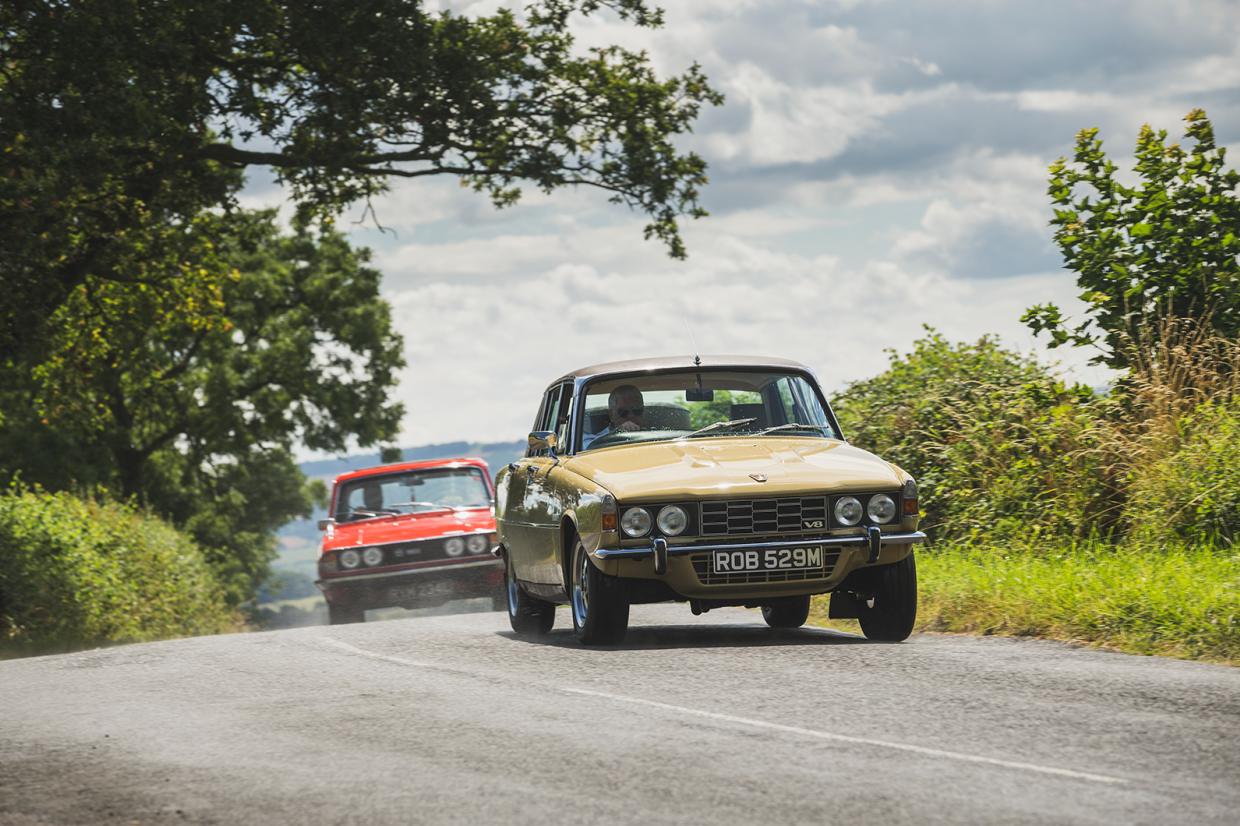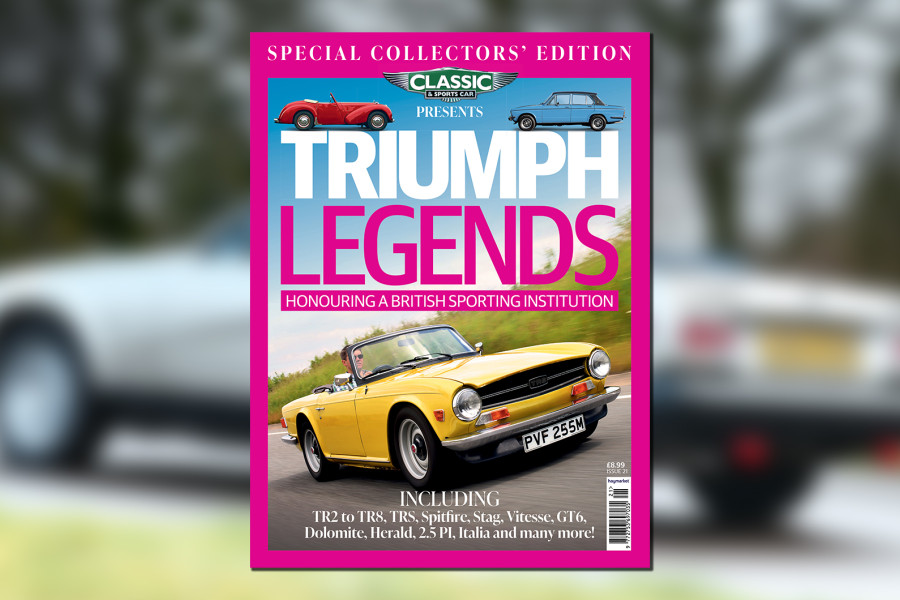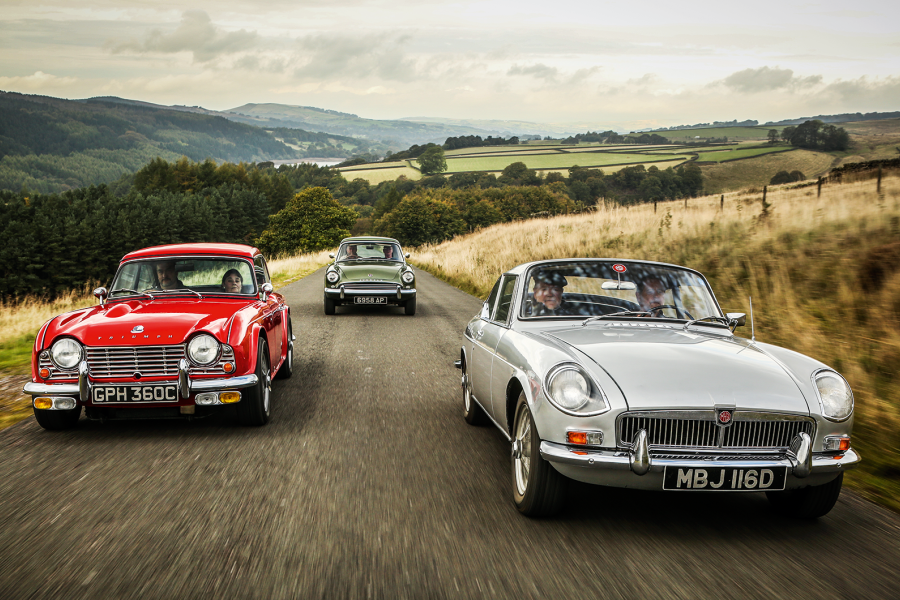Intelligent as the design is, it does lose out slightly to the quality of fixtures in its rival – the small details such as the indicator stalks and quarterlight mechanisms, for example, just feel better engineered and more expensive in the Rover.
Triumph and Rover had the executive saloon market sewn up in the 1960s
Any thoughts of fixtures and fittings evaporate as soon as you spark the meaty straight-six into life – the beating heart that separates the 2.5 PI from lesser Triumph saloons.
Power dropped from 132bhp to 124bhp in 1972 thanks to rationalisation of components with the TR6 range, but the PI is still a lively performer with superb throttle response that lifts the nose on its compliant springs.
The rugged J-type overdrive four-speed is a joy to use, with a long throw that quickly becomes second nature, and one of the best classic soundtracks is only enhanced by the addition of a Chris Witor sports exhaust, which produces a note that gets ever more scintillating the higher up the rev range you climb.
The Rover immediately feels more stately, with its bigger V8 providing a more muted score on start-up.
These are both fantastic examples of their type
It’s only when you bear down on the throttle and hold the gears that the familiar music begins to play.
The four-speed manual gearbox may have a poor reputation for reliability, but in Reeve’s car it’s a honey with a smooth action and neat, narrow gate that just edges the Triumph – aided by the addition of an aftermarket servo to lighten the clutch.
Despite carrying 40kg more timber than the PI, the sweet Rover V8 powerplant more than compensates.
The P6 is noticeably quicker to 50mph to the tune of almost half a second and storms beyond the Triumph’s top speed despite a shorter final-drive ratio. It’s also more usable around town thanks to all that low-down torque.
The 2.5 PI shows its familial lineage as it chases the V8 Rover, with similar rear lights across the whole Triumph range
Triumph and Rover’s greatest rivalry was the P6 and 2000, their biggest battleground always for the hearts and minds of middle management boomers.
In the beginning you couldn’t slip a cigarette paper between the two saloons, and the same holds true as much today as when the 2.5PI and 3500S bowed out in the late 1970s.
Almost an even match for performance and luxury, but each with its flaws; the Rover for its chocolate manual gearbox, and the Triumph its troublesome mechanical fuel injection.
Still, it’s hard to say no to either. It doesn’t matter if you drink single malt or a blend, you’ll still have a great time – even if you do occasionally wake up with a headache.
Images: Luc Lacey
Thanks to The Triumph 2000 2500-2.5 Register; The Rover P6 Club; XM655 Maintenance & Preservation Society
Factfiles
Rover P6 3500S
- Sold/number built 1971-'76/2715
- Construction steel monocoque with bolt-on body panels, alloy boot and bonnet
- Engine all-aluminium overhead-valve 3528cc V8 with twin SU carburettors
- Max power 150bhp @ 5000rpm
- Max torque 201lb ft @ 2750rpm
- Transmission four-speed manual, RWD
- Suspension at front independent, by transverse lowerlinks, leading upper links acting on horizontal coil springs, anti-roll bar rear coil springs, fixed-length driveshafts, stabiliser rod, de Dion sliding tube, fore/aft Watt linkages; telescopic dampers f/r
- Steering recirculating ball
- Brakes discs, inboard at rear, with servo
- Length 15ft (4566mm)
- Width 5ft 6in (1676mm)
- Height 4ft 8in (1422mm)
- Wheelbase 8ft 7in (2625mm)
- Weight 2855lb (1295kg)
- 0-60mph 9.1 secs
- Top speed 125mph
- Mpg 20.8
- Price new £1976 13s
- Price now £5-20,000*
Triumph 2.5 PI MkII
- Sold/number built 1969-'75/49,742
- Construction steel monocoque
- Engine all-iron overhead-valve 2498cc straight-six with Lucas mechanical fuel injection
- Max power 124bhp @ 5500rpm
- Max torque 153lb ft @ 2000rpm
- Transmission four-speed manual with overdrive or three-speed auto, RWD
- Suspension independent, at front by MacPherson struts rear semitrailing arms with coil springs; antiroll bar f/r
- Steering rack and pinion
- Brakes discs front/drums rear, with servo
- Length 15ft 2in (4631mm)
- Width 5ft 5in (1651mm)
- Height 4ft 8in (1422mm)
- Wheelbase 8ft 10in (2692mm)
- Weight 2767lb (1255kg)
- 0-60mph 11.5 secs
- Top speed 107mph
- Mpg 21.8
- Price new £1595 1s 4d
- Price now £5-15,000*
*Prices correct at date of original publication
READ MORE
Guilty pleasures: Rover P4
Separated at birth: Saab 99 vs Triumph Dolomite
How I learned to love Britain’s cars of the ’70s
Greg MacLeman
Greg MacLeman is a contributor to and former Features Editor of Classic & Sports Car, and drives a restored and uprated 1974 Triumph 2500TC


























